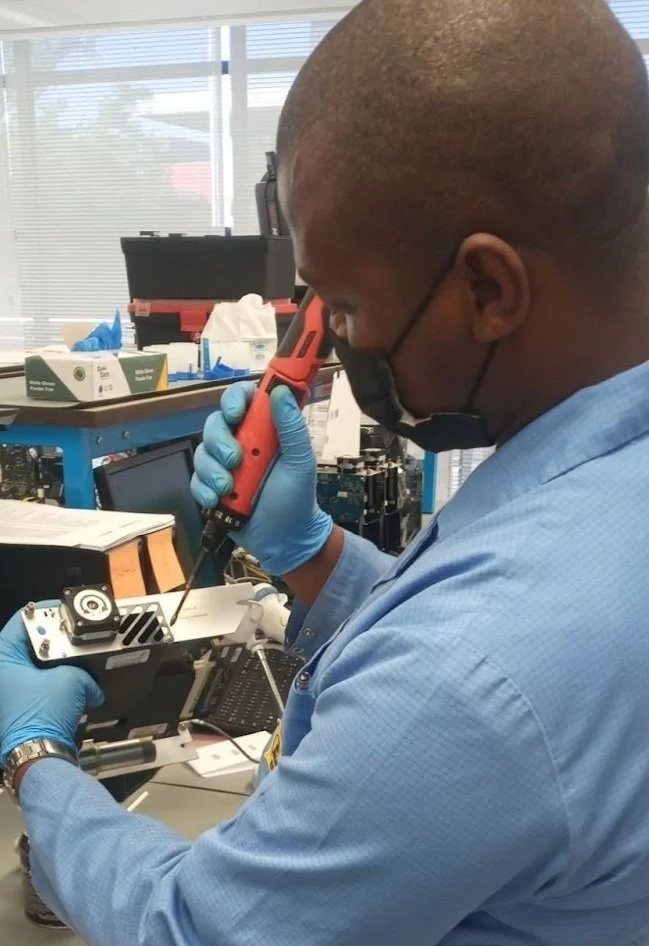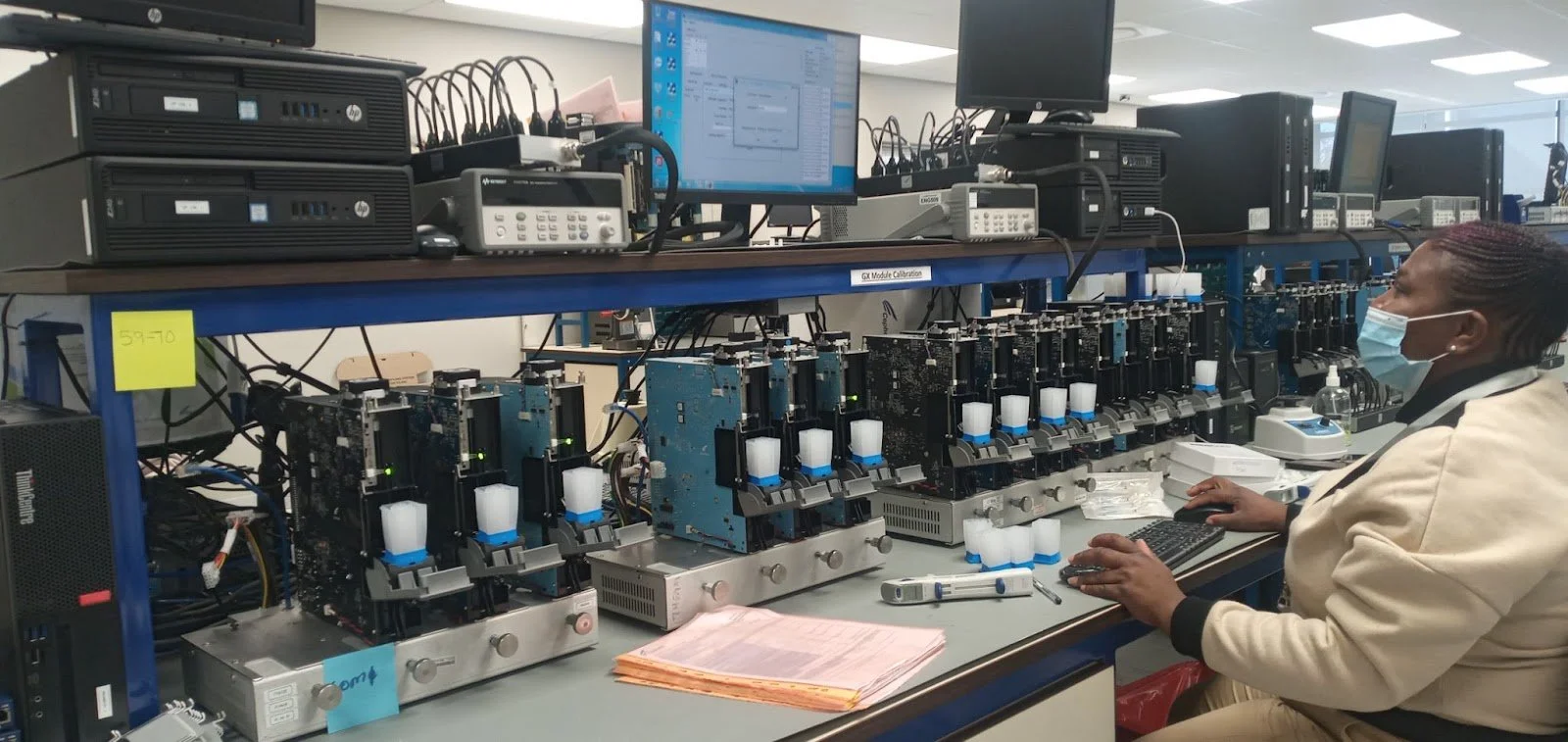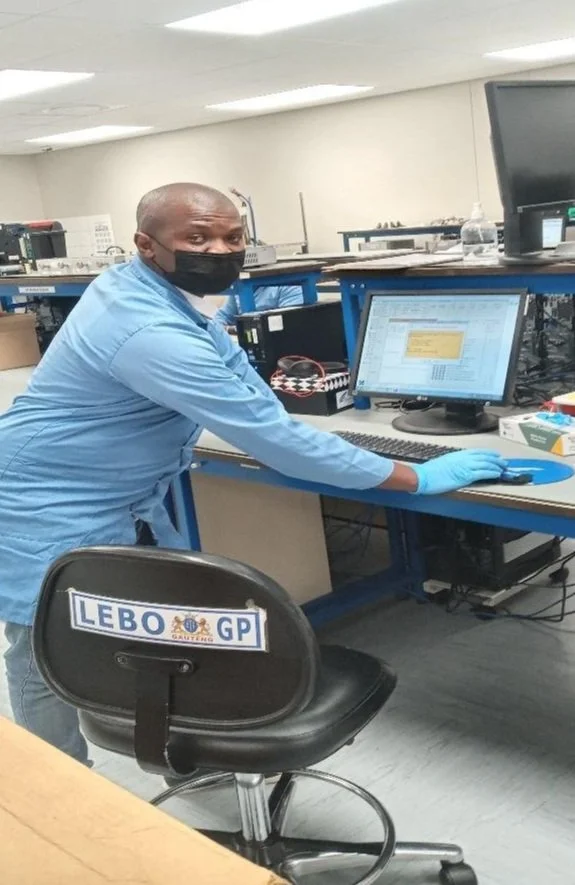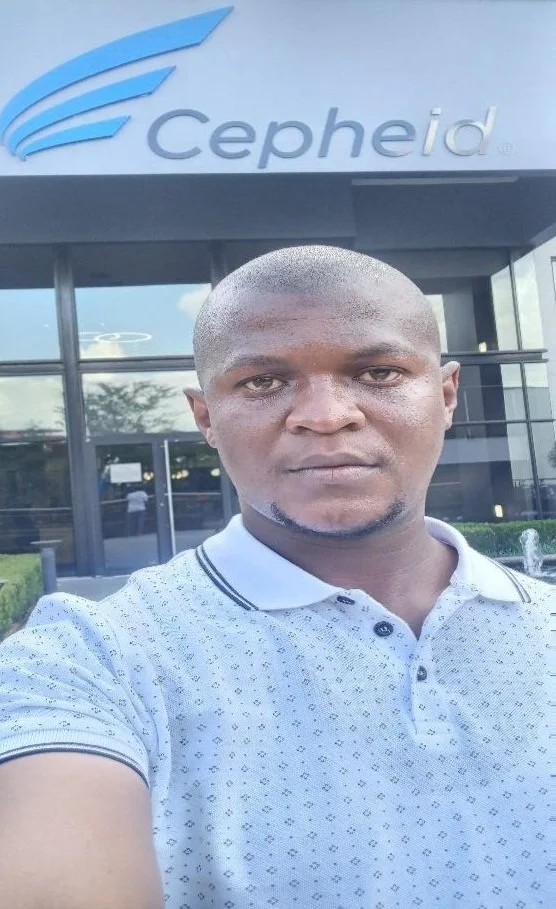He is such a humble guy with great experience in the field and didn't mind sharing his knowledge and tricks with me. I ended up assembling and disassembling the modules for him that he needed to fix. After this I let him do his thing (or our thing, because every technician has to know all of the processes to acquire a single repaired module). Of course, I can’t get into too much detail as a user runs a test on the company’s software, and the software detects the failure. This is interpreted by the technician who’s on the FI (Further Investigation) process. At this stage, a code failure has to be interpreted into an action plan for going ahead with the actual “fix” to a module before retesting it and passing it over for calibration. Calibration includes stimulating the optic light via an empty cartridge that is injected, repackaged, and delivered to NHLS (National Health Laboratory Services).
We continued with the decontamination as three batches of modules arrived from Malawi and Nigeria. We had to unpack them from boxes, dispose of doors & ejectors then decontaminate them. After we finished with the decontamination, Mark took me to the FI workstation to run a test on modules after they have been repaired using ret standard option to validate whether the module operates as expected or if there are any errors remaining in the module.
On Friday (Trogen’s birthday) Mark bought us lunch. He told us that on Monday we would be starting with the repairs. Mark guided us, he showed us what to do and we followed his example. We managed to finish two modules on Monday.
On Tuesday we started the repairs separately. At the end of the day when we combined the modules that we managed to fix, we counted that there were thirteen in total.
On Wednesday we started our day with thermal calibration. We selected our software on drive O under the folder s0118 ; changing the probes back and forth. We took the modules from thermal tests and made a warm-up after we finished; we started our six colour dye test on the folder s0119. We put the dye to stimulate the LED, then followed up with TXR, 532, CF1, 647,FAM & CF6. During the other processes, we put two measurements of dye on the cartridge and four for the BFL calibration.
The following day I made FI with modules from Malawi and once Further Investigating was complete, immediately repaired the modules. . During the repair process I had to make the I-CORE configuration and upload a new motherboard to the system. This is how I could run a module test to confirm that the module is repaired successfully and it’s ready for RUN-in. Thermal calibration takes place after these processes and then moves for optical calibration.




